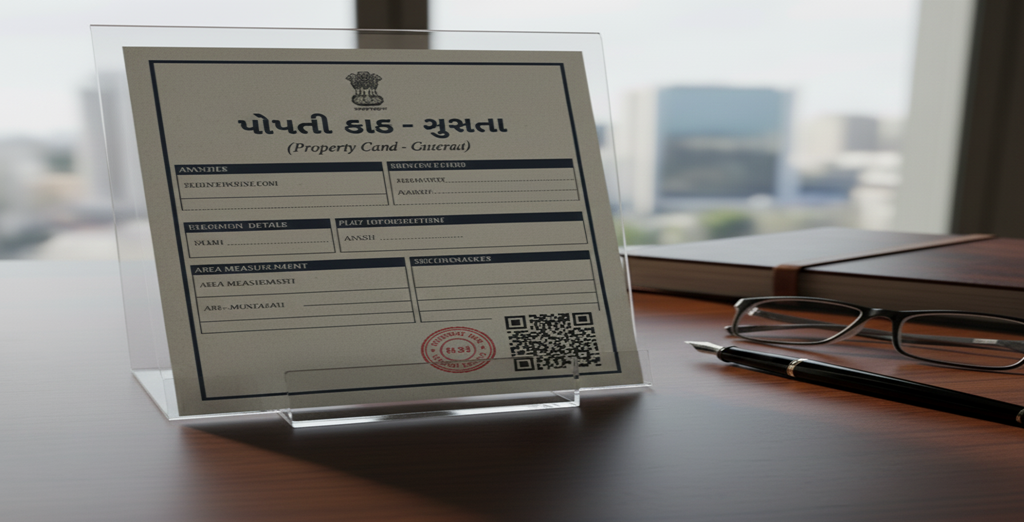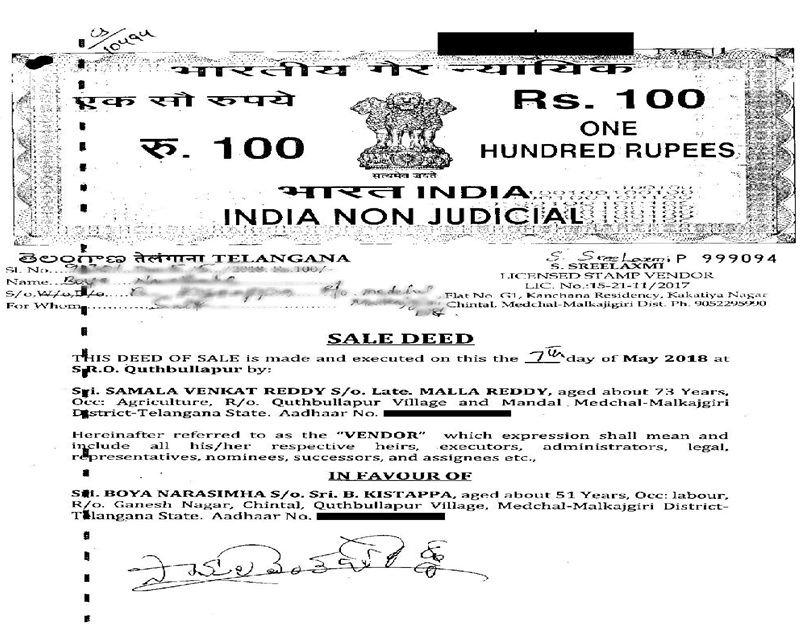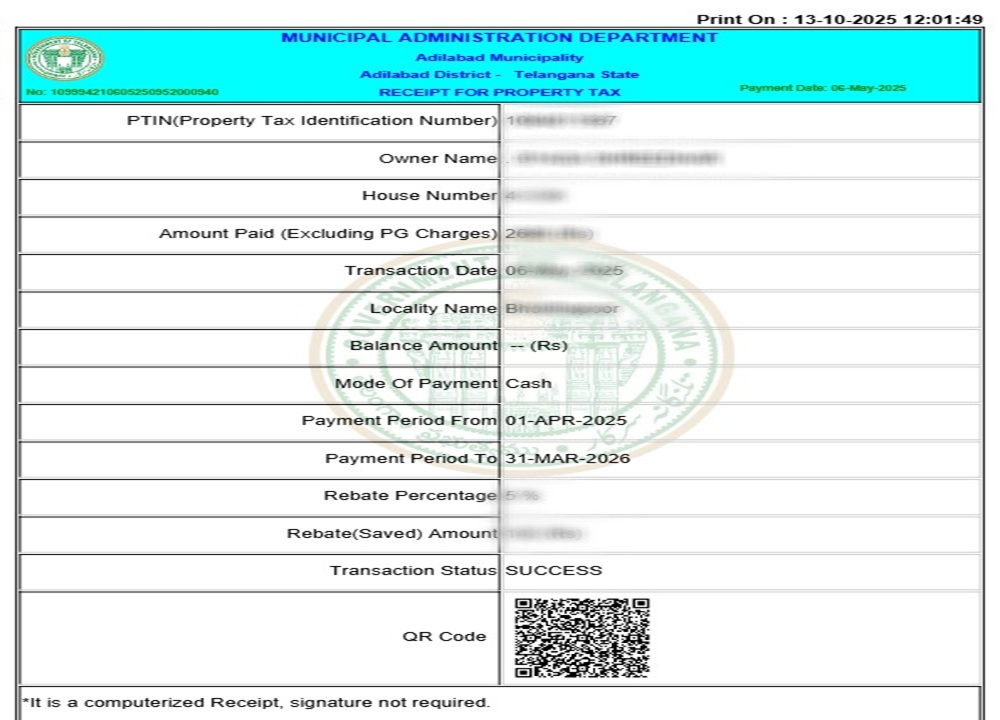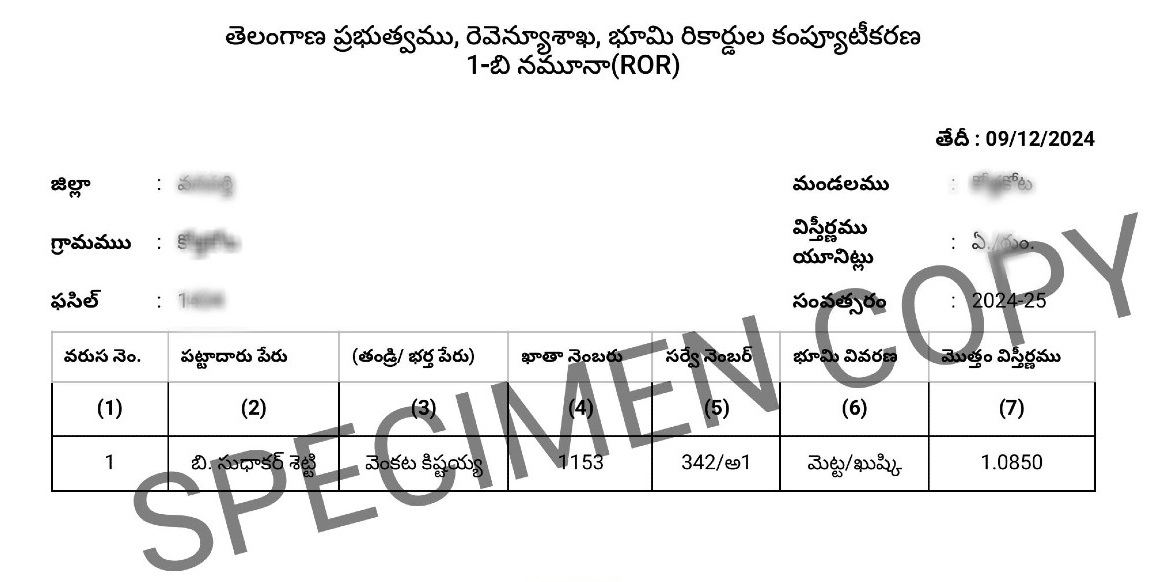A Gujarat Property Card also known as the Record of Rights (ROR), serves as a vital document for landowners in Gujarat. This document provides a detailed overview of a property’s ownership, history, and other relevant details.
What is a Gujarat Property Card?
A Gujarat Property Card, or ROR, is a legal document that contains comprehensive information about a specific property located within the state of Gujarat. The property card includes details such as the owner’s name, survey number, area of the land, type of land, encumbrances, and any history of transactions related to the property. This document is maintained by the Gujarat state government and is crucial for establishing clear ownership and facilitating property-related transactions.
Key Details Found on a Gujarat Property Card
A Gujarat Property Card contains several essential pieces of information. These details provide a complete picture of the property’s legal standing and history.
- Owner’s Name: The property card clearly states the name of the current owner or owners of the land.
- Survey Number: Every property has a unique survey number assigned to it, which is a primary identifier used for official records.
- Area of Land: The total area of the property is specified in the property card, usually measured in square meters or hectares.
- Type of Land: The classification of the land, such as agricultural, residential, or commercial, is mentioned to define its permissible usage.
- Encumbrances: Any existing mortgages, liens, or legal dues on the property are recorded as encumbrances, providing transparency about the property’s liabilities.
- History of Transactions: The property card includes a record of past sales, transfers, or mutations, offering a chronological view of ownership changes.
Importance of Obtaining a Gujarat Property Card
Obtaining a Gujarat Property Card is essential for several reasons. It ensures transparency and security in property dealings.
- Establishing Ownership: The property card serves as a primary document to establish and verify the ownership of a property, reducing the chances of fraudulent claims.
- Facilitating Transactions: During property transactions such as buying, selling, or transferring ownership, the property card is a mandatory document for legal processing.
- Legal and Financial Security: Banks and financial institutions require a property card to approve loans or mortgages, as it provides a clear picture of the property’s legal status and encumbrances.
- Resolving Disputes: In case of property disputes or legal conflicts, the details on the property card are considered valid evidence in court.
- Government Records: The property card ensures that all land records are accurately maintained and updated by the state government, contributing to efficient land administration.
How to Apply for a Gujarat Property Card
Applying for a Gujarat Property Card is a straightforward process. It can be done through both online and offline methods.
- Online Application:
- Visit the official Gujarat government land records portal.
- Register or log in to the portal.
- Fill out the application form with the necessary details, such as property location, survey number, and owner information.
- Upload the required documents, including identification proof, property documents, and any other documents specified by the portal.
- Pay the application fee online through the available payment gateways.
- Submit the application and retain the acknowledgment receipt for future reference.
- Offline Application:
- Visit the local Mamlatdar office or the designated land record office in your district.
- Obtain the application form for a property card.
- Fill out the form accurately with all the required details.
- Attach the necessary documents, such as identification proof, property documents, and any other documents specified by the office.
- Submit the application form along with the application fee to the designated officer.
- Obtain an acknowledgment receipt for the submission.
Documents Required for Application
When applying for a Gujarat Property Card, certain documents are necessary. These documents help in verifying the property details and the applicant’s identity.
- Identification Proof: Aadhar Card, Voter ID, Passport, or any other government-issued ID.
- Address Proof: Utility bill, bank statement, or any document that verifies the applicant’s current address.
- Property Documents: Sale deed, purchase agreement, or any document that proves ownership of the property.
- Old Property Card (if available): If you are updating an existing property card, the old card is required.
- Affidavit: A self-declaration stating the purpose of obtaining the property card and the accuracy of the information provided.
- Other Relevant Documents: Any additional documents requested by the land record office based on specific cases.
How to Read and Interpret a Gujarat Property Card
Reading and interpreting a Gujarat Property Card accurately is essential for understanding the property’s legal status. Here are the key sections and how to interpret them:
- Header Information:
- District and Taluka: Identifies the district and sub-district where the property is located.
- Village Name: Specifies the name of the village where the property is situated.
- Property Details:
- Survey Number/Block Number: A unique identifier for the property.
- Area: The total area of the property, usually in square meters or hectares.
- Land Type: Classification of the land (e.g., agricultural, residential, commercial).
- Ownership Details:
- Name of the Owner(s): The full name of the current owner(s) as per the records.
- Share: If the property has multiple owners, their respective shares are mentioned.
- Encumbrance Details:
- Mortgages: Details of any existing mortgages on the property, including the lender’s name and the loan amount.
- Liens: Information about any legal dues or pending payments on the property.
- Court Orders: Any court orders affecting the property, such as attachment orders.
- Mutation History:
- Mutation Number: A unique number assigned to each transaction.
- Date of Mutation: The date when the transaction was recorded.
- Details of Transaction: A brief description of the transaction, such as sale, transfer, or inheritance.
Recent Updates and Amendments in Gujarat Property Card Rules
The Gujarat government periodically updates and amends the rules pertaining to property cards. These updates aim to streamline the process, enhance transparency, and ensure efficient land administration. Some recent changes include:
- Digitization of Land Records: The government is actively digitizing land records to make them more accessible and reduce processing times.
- Online Verification: Introduction of online portals for verifying property card details, allowing stakeholders to access information remotely.
- Integration with Other Databases: Linking property card data with other government databases to ensure consistency and accuracy.
- Simplified Application Process: Simplifying the application process by reducing the number of required documents and streamlining the online submission process.
- Real-Time Updates: Implementing systems for real-time updates of property card details to reflect recent transactions and changes in ownership.
Conclusion
In conclusion, a Gujarat Property Card is a critical document. It is essential for establishing ownership, facilitating property transactions, and ensuring legal and financial security. By understanding the details contained in the property card and following the correct application procedures, landowners can protect their rights and interests. The ongoing digitization and updates to property card rules by the Gujarat government further enhance the accessibility and reliability of this vital document.



